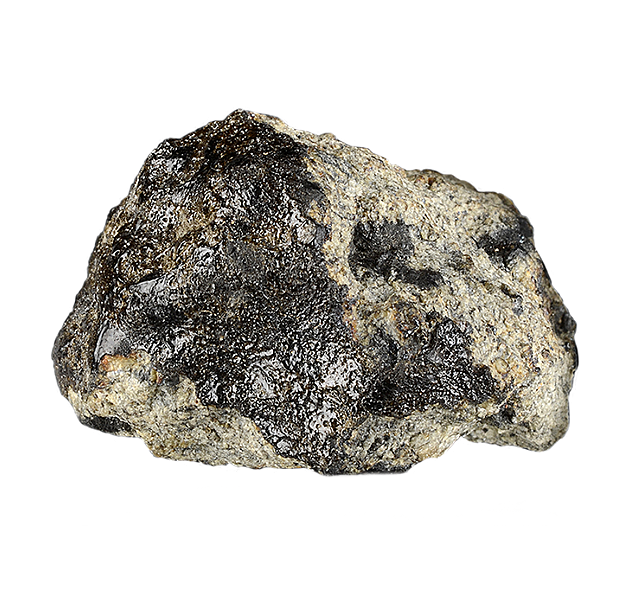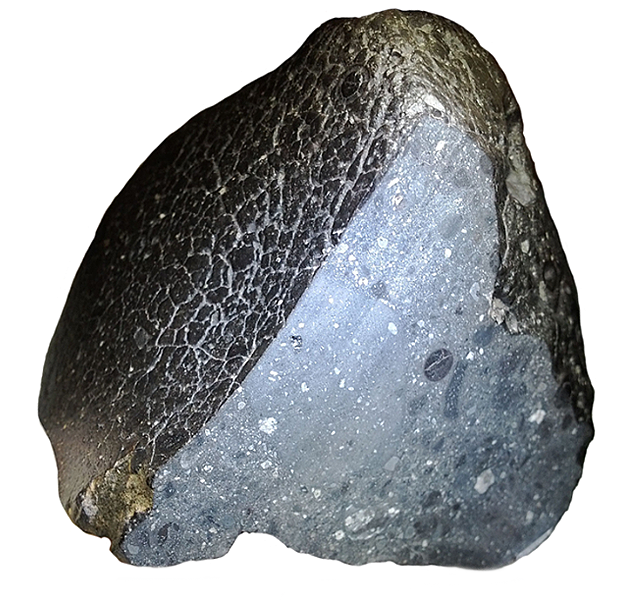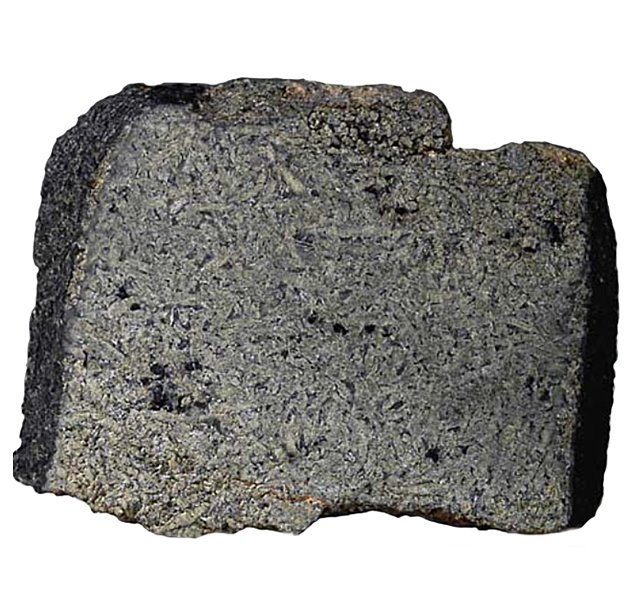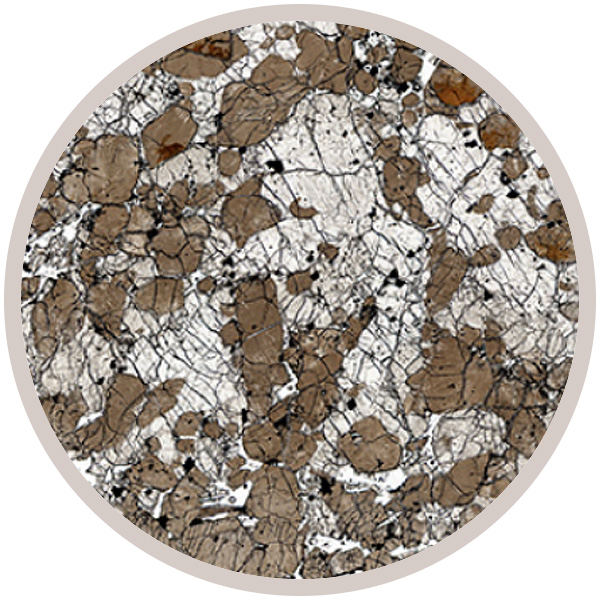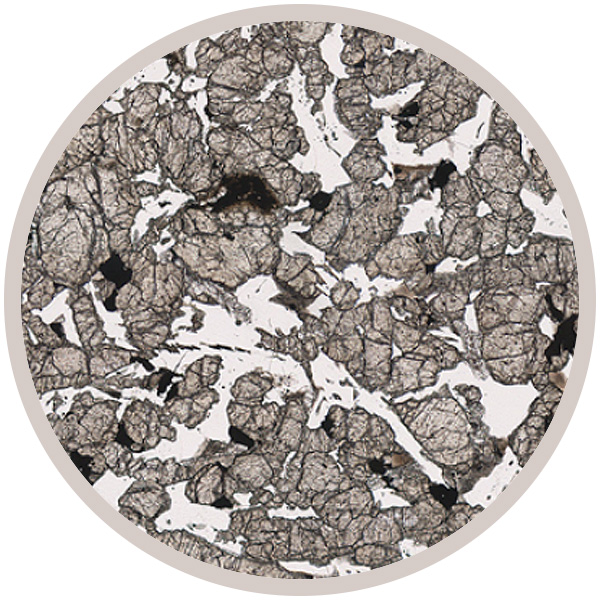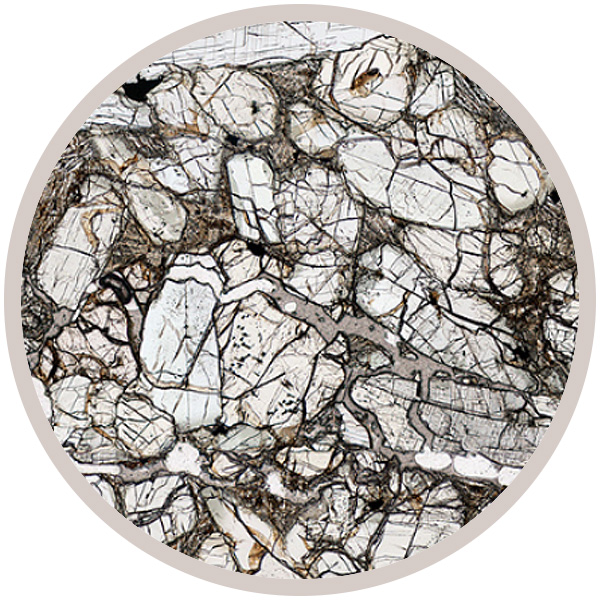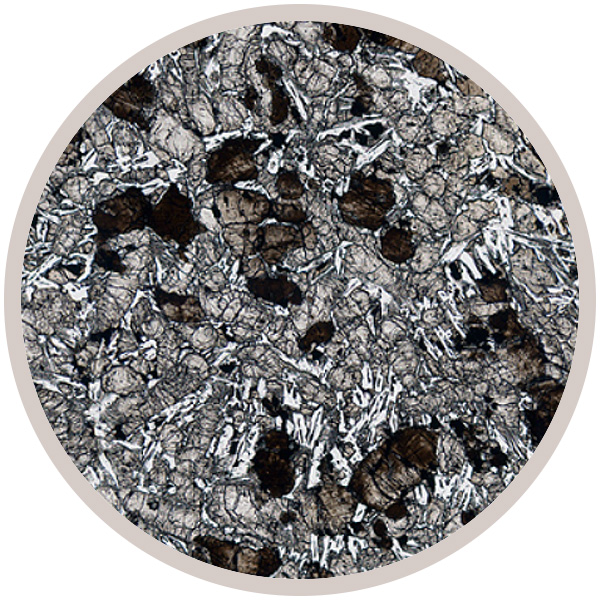
Fact sheet
This olivine-phyric shergotitte was found in 2006 near the Larkman Nunatak, Antarctica. Isotopic techniques have produced a range of ages for the sample - 179 m.y. (Lu-Hf), 190 m.y. (Sm-Nd) and 207 m.y. (Rb-Sr).
Much of the outer surface of the sample is a brown-black fusion crust with a fine-grained wrinkled texture. The interior is grey-black in colour and the matrix is both fine-grained and very hard.
The mineral assemblage consists of olivine phenocrysts set in a matrix of pyroxene (enstatite, pigeonite and augite) and plagioclase feldspar (now converted to maskelynite). Accessory constituents include apatite, merrillite, chromite, Ti-chromite, troilite, pyrrhotite and pyrite. Small melt inclusions occur in the olivine and pyroxene. Shock melt veins cut the sample.
This description is based on the work of NASA scientist Charles Meyer - compiler of The Mars Meteorite Compendium. Further details are available from the Antarctic Meteorite Newsletter.
This collection of meteorites includes Shergottites, Nakhlites and Chassignites (or SNC meteorites) which originate from the surface of the planet Mars.
They carry unique signals of the surface of the planet that allows scientists to study the composition and age of Martian rocks. The collection includes a sample of the famous ALH84001 meteorite, evidence from which was used in 1996 to begin the debate of 'life on Mars?'.
